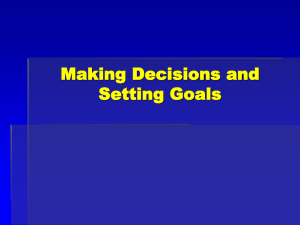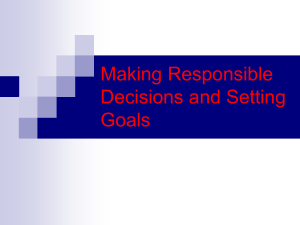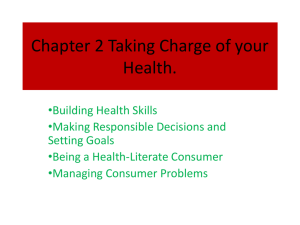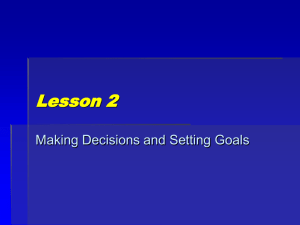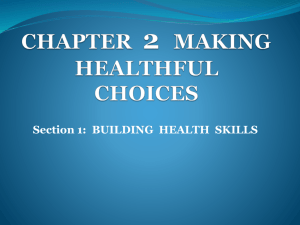CHAPTER 2 Making Decisions and setting goals
advertisement
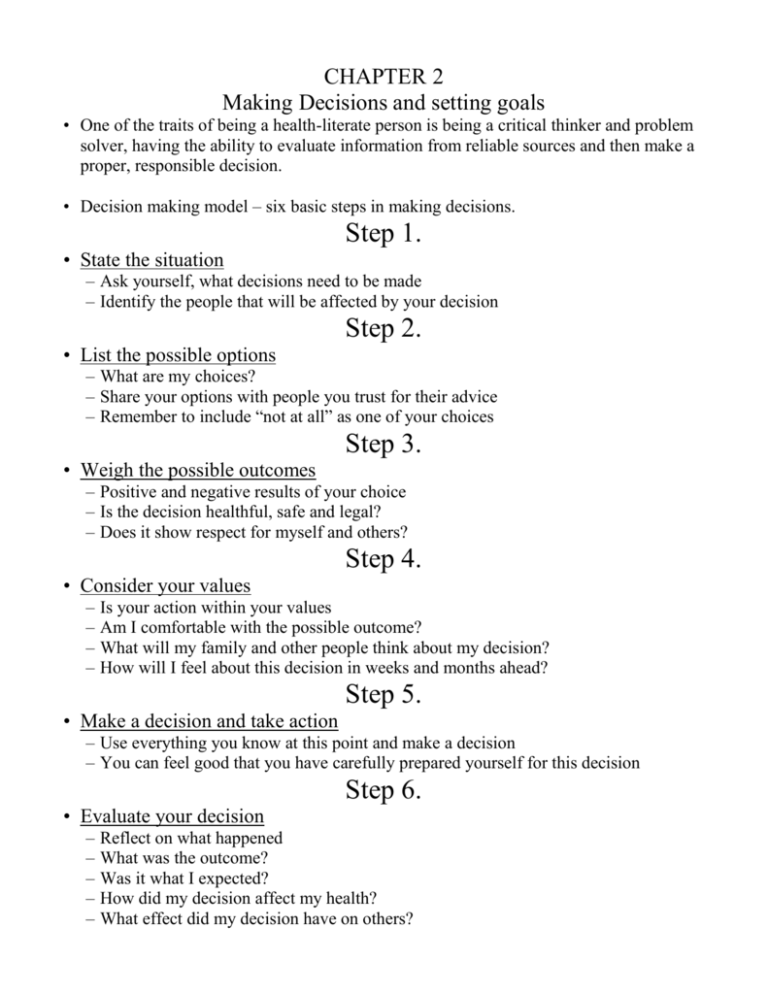
CHAPTER 2 Making Decisions and setting goals • One of the traits of being a health-literate person is being a critical thinker and problem solver, having the ability to evaluate information from reliable sources and then make a proper, responsible decision. • Decision making model – six basic steps in making decisions. Step 1. • State the situation – Ask yourself, what decisions need to be made – Identify the people that will be affected by your decision Step 2. • List the possible options – What are my choices? – Share your options with people you trust for their advice – Remember to include “not at all” as one of your choices Step 3. • Weigh the possible outcomes – Positive and negative results of your choice – Is the decision healthful, safe and legal? – Does it show respect for myself and others? Step 4. • Consider your values – – – – Is your action within your values Am I comfortable with the possible outcome? What will my family and other people think about my decision? How will I feel about this decision in weeks and months ahead? Step 5. • Make a decision and take action – Use everything you know at this point and make a decision – You can feel good that you have carefully prepared yourself for this decision Step 6. • Evaluate your decision – – – – – Reflect on what happened What was the outcome? Was it what I expected? How did my decision affect my health? What effect did my decision have on others? – What did I learn from my decision? – Would I take the same action again? Recap Setting Goals • Goal – something you aim for that takes planning and work to reach. – Short-term goals – goals that can be reached in a relatively short period of time – Long-Term Goals – goals that take longer periods of time and maybe even lifetimes to reach Goal Action Plan 1. 2. 3. 4. 5. 6. Select a specific goal to work on List what you will do to reach your goal Identify sources of help and support. Set a reachable time frame for reaching your goal Establish checkpoints to evaluate your progress Reward yourself after reaching your goal • While goals can differ in the amount of time and degree of effort necessary to reach them, all can be achieved by creating an action plan. • Action plan – multi-step strategy for identifying and achieving goals. Other guidelines for setting goals • Keep these additional guidelines in mind when setting goals: – Make sure you goal will not harm your health or any one else’s. – Be sure you goal shows respect for you and everyone else affected by it. – Set a goal because it will help you grow to be a better person, not because you want to outdo someone or win someone’s attention. – If you fail to reach your goal, keep your head up, use what you learn from failure to set a new goal.
